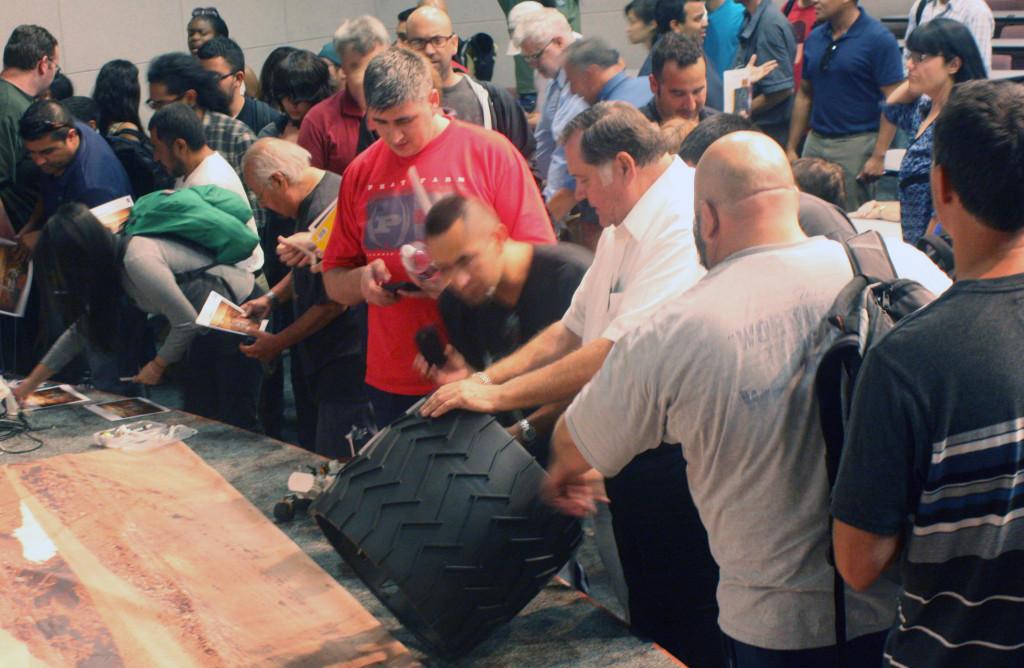Jet Propulsion Laboratory operations engineer Tom Nolan spoke to students and attendees about the rover, Curiosity, at Cerritos College on Sep. 18, thanks to the Cerritos College’s Economic Development and Pathway Program Departments in collaboration with the Society of Manufacturing Engineers.
The rover Curiosity is currently exploring the chemistry of Mars’ surface.
Nolan said, “We don’t think there is life there right now, there could be, but we don’t think there is. We are open to what the evidence tells us.”
The rover landed on Mars on Aug. 5 and it will stay there one martian year, which equals to about two Earth years. The rover will remain on Mars for as long as possible, but engineers calculated its life span.
Nolan explained the differences between the rovers.
“In 1997, Pathfinder was launched (and) it was a proof of a concept mission. It didn’t do much, (there was) a little bit of science in it. It was really to say, ‘Can we maneuver on another planet?’ And the answer is yes,” he said.
Former research engineer manager William Somsak worked for JPL back in 1965. Somasak said, “Nowadays, technology will allow Curiosity to obtain a lot more information.
“We didn’t have the technology (JPL) had. We were running software much slower back in ‘65 when the surveyor landed on the moon. Its real job was to only take pictures.”
Consequently came the rovers Spirit and Opportunity; some improvements were made to these rovers.
“We did them a little bit smarter, a little bit bigger. We made two rovers, Spirit and Opportunity, (and)we landed them on two different parts of mars. (They) landed on opposite hemispheres to see what the different terrain was like,” said Nolan.
With the discovery of water on Mars, scientists expect to find the simplest form of life in the water, but as of now the only water they have discovered is in the form of ice, which doesn’t allow any life form to develop.
Nolan said, “Now we just landed Curiosity (in) August, which is much bigger than the others. It’s going to do the chemistry of what habitats are like, or if there could be life in Mars or if there has been (previously).”
Curiosity has been designed to maneuver Mars’ unsteady surface. Previous rovers encountered problems like getting stuck in places where a lot of rocks or craters will stop them from moving around.
“Curiosity is more than double the size of the previous rovers; it has the science of chemistry in it. Before we had geology, but not chemistry. So as we go out, we are looking for the different science disciplines,” added Nolan.
About 50 years ago, Somsak worked with Richard C. Hoagland, who worked for NASA’s JPL. According to Somsak, some of the theories Hoagland made about Mars since then are now scientifically proven.
“We are beginning to put things together. I find it very interesting to see the things Hoagland once said from his studies, are being proved,” said Somsak.
Nolan added about Curiosity’s landing, “We landed in a beautiful crater where this rare lake could have been, and it’s got a great geology. We can tell the history of Mars.
“So we can tell at what point there could have been life. If we look at that layer and see if that is where there was habitat for life.”
Currently, life outside our planet still remains unknown.








